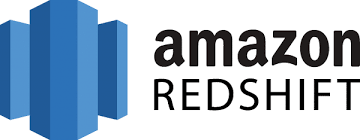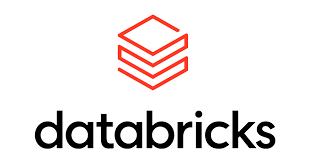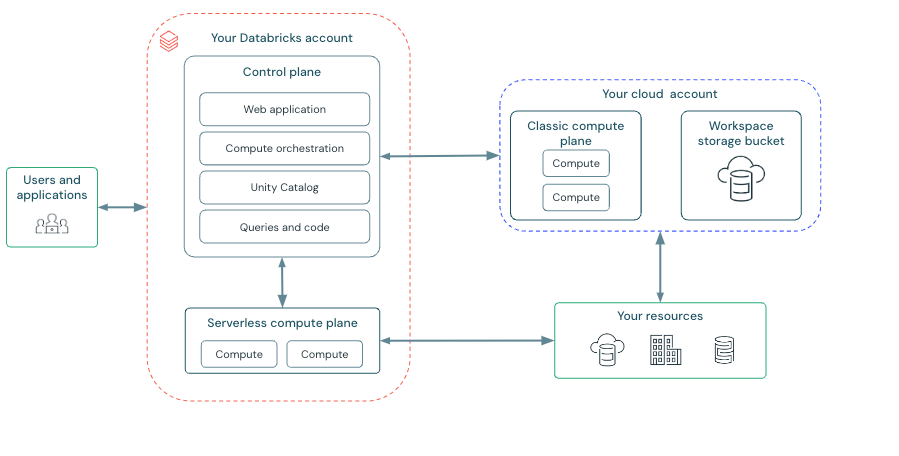Databricks is a leading Lakehouse and a hot selling product in the market. Databricks is known for combining the Data Lake and Data Warehouse in a single model known as Lakehouse. On the other hand, AWS Redshift is a popular Data warehouse tool from Amazon Web Service Stack. It has a petabyte scalable architecture and is most frequently used by Data Analysts to analyze the data.
This blog talks about Databricks vs Redshift in great detail. It also briefly introduces AWS Redshift and Databricks before diving into the differences between them.
Table of Contents
What is AWS Redshift Architecture?

The architecture of AWS Redshift contains a leader node and compute nodes. The compute node forms the cluster and performs analytics tasks assigned by the leader node. The below snap depicts the schematics of AWS Redshift architecture:

AWS Redshift offers JDBC connectors to interact with client applications using major programming languages like Python, Scala, Java, Ruby, etc. Read about the Redshift architecture and its components in detail.
Key Features of AWS Redshift
- AWS Redshift provides a complete data warehouse solution by maintaining Security, Scalability, Data Integrity, etc.
- AWS Redshift supports and works efficiently with different file formats, viz. CSV, Avro, Parquet, JSON, and ORC directly with the help of ANSI SQL.
- AWS Redshift has exceptional support for Machine Learning and Data Science projects. Users can deploy Amazon Sagemaker models using SQL.
- AWS Redshift uses the Advanced Query Accelerator (AQUA) concept, making the query execution 10x faster than other cloud data warehouses.
- AWS Redshift is a petabyte scalable architecture. Users can easily upscale or downscale the cluster as per the requirement.
- AWS Redshift enables secure sharing of the data across Redshift clusters.
- Amazon Redshift provides consistently fast performance, even with thousands of concurrent queries.
What is Databricks Lakehouse Architecture?

The architecture of Databricks is divided into a Control Plane and a Serverless Compute Plane. The Control Plane deals with the overall control of the environment, from access of users to their data up to orchestrating jobs and data governance. The Serverless Compute Plane automatically manages computations that scale resources aligned to needs of effective analytics workloads processing. Collectively, these components facilitate timely collaboration and data analysis under one unified cloud environment.
The data lakehouse is an open data architecture combining the best data warehouses and data lakes on one platform.
Suggested:

Key Features of Databricks
Databricks is a leading solution for Data Analysis and Data Scientists. The key features of Databricks are as follows –
- Notebooks: The main key feature or USP of the Databricks is their Notebooks. It is equipped with various languages (Python, Scala, SQL, and many more) that help users instantly analyze and access the data. The Databricks Notebook is also shareable across the workspace, enabling collaborative working in an organization.
- Delta Lake: Databricks has an open source Data Storage layer known as Delta lake, and the tables underneath are known as Delta Tables. Delta lake and Delta Tables allow users to perform ACID transactions on the data, which was quite a tedious task.
- Apache Spark: The backend of Databricks is supported by Apache Spark. With Apache Spark’s lightning-fast in-memory computations, you can effortlessly integrate various Open-source libraries with Databricks.
- Multi-Cloud Integration: Databricks supports the leading cloud and can easily be integrated. It supports AWS, Azure, and GCP as its leading cloud platform. With these cloud service providers, you can easily set up the clusters and execute BigData with the help of Apache Spark.
- Machine Learning: Databricks offers various machine learning libraries from Apache Spark, as well as native Python libraries like TensorFlow, PyTorch, Scikit-Learn, and many more. Users can quickly adapt these libraries and quickly build and train Machine Learning models.
Replicate Data in Databricks & Redshift in Minutes Using Hevo
With Hevo’s wide variety of connectors and blazing-fast Data Pipelines, you can extract & load data from 150+ Data Sources straight into your Data Warehouse like Redshift, Databricks, Snowflake and many more. Know why Hevo is the Best:
- Cost-Effective Pricing: Transparent pricing with no hidden fees, helping you budget effectively while scaling your data integration needs.
- Minimal Learning Curve: Hevo’s simple, interactive UI makes it easy for new users to get started and perform operations.
- Schema Management: Hevo eliminates the tedious task of schema management by automatically detecting and mapping incoming data to the destination schema.
What are the Key Differences of Databricks vs Redshift?
Now that you have discussed AWS Redshift and Databricks Lakehouse in detail in the above section. Let us compare them based on different aspects:
1) Databricks vs Redshift: Deployment Model
- Generally, AWS Redshift has a SaaS(Software as a Service) Deployment model. AWS Redshift is a Cloud-based service from Amazon Web Services and hence follows the same Deployment model as other AWS services. Users can create Redshift clusters and attach them to the ready-to-use AWS Redshift.
- In the same way, Databricks also follows the Saas(Software-as-a-Service) Deployment Model. It has a cluster, storage system, file system, etc. Users who want to use Databricks can subscribe to their available plans and use the ready-to-go Databricks solutions.
2) Databricks vs Redshift: Data Ownership
- AWS retains the ownership of both Data Storage and Data Processing layers. In AWS Redshift, data ownership is maintained entirely by AWS services. Be it its storage layer or S3, you cannot store or move the data to any Third-Party application if you have to use AWS Redshift.
- On the other hand, with Databricks, the Data Storage and Data Processing layers are separated. It allows you to store the data in any cloud storage (i.e., AWS, Azure, GCP) or within Databricks.
3) Databricks vs Redshift: Data Structure
- AWS Redshift supports semi-structured and structured data. AWS redshift uses the COPY command to copy the data from S3 to its warehouse, thereby maintaining data integrity and ownership. Once the data is loaded into its warehouse, it can then be used to perform analytics and generate insights. AWS redshift can work with data types such as CSV, Parquet, JSON, Avro, etc.
- Like AWS Redshift, Databricks also works with all the data types, such as CSV, Parquet, JSON, and many more, in their original format. Can work with all the data types in their original format. You can even use Databricks as an ETL tool to add structure to your Unstructured data so that other tools like Snowflake can work with it.
4) Databricks vs Redshift: Use Case Versatility
- AWS Redshift provides an SQL interface to write and execute queries on the data residing in its warehouse. AWS Redshift is best suited for SQL-based Business Intelligence use cases. They perform Machine Learning and Data Science use cases; users must rely on the different tools from the AWS stack.
- On the other hand, Databricks allows users to perform Big Data analytics, build and execute Machine Learning Algorithms, and develop Data Science capabilities. It also allows the execution of high-performance SQL queries for Business Intelligence use cases.
5) Databricks vs Redshift: Scalability
- AWS Redshift uses its Cluster, which is highly scalable. It allows users to create clusters with different configurations and upscale and downscale at any given time without fear of losing any data.
- On the other hand, Databricks also offers scalable clusters which can be scaled up and down based on the requirements.
6) Databricks vs Redshift: Pricing
- AWS Redshift, allows you to create a small cluster as small at $0.25 per hour and scale up to petabytes of data and thousands of concurrent users. However, AWS Redshift has a pay-as-you-go pricing model that allows users to save money when the cluster is idle.
- Databricks offers you a pay-as-you-go approach with no up-front costs. However, Databricks pricing is also dependent upon the cloud services chosen. You can find more about pricing here.
Quick Recap
| Feature | AWS Redshift | Databricks |
| Deployment Model | SaaS (Software as a Service) | SaaS (Software as a Service) |
| Data Ownership | AWS retains ownership of data storage and processing; data cannot be moved to third-party apps. | Data ownership is flexible; data can be stored in any cloud storage or within Databricks. |
| Data Structure | Supports semi-structured and structured data (e.g., CSV, Parquet, JSON, Avro) using the COPY command. | Works with all data types in their original format and can structure unstructured data. |
| Use Case | Best suited for SQL-based Business Intelligence; relies on other AWS tools for ML and Data Science. | Supports Big Data analytics, machine learning, and high-performance SQL queries. |
| Scalability | Highly scalable clusters can be configured and adjusted without data loss. | Scalable clusters can be adjusted based on requirements. |
| Pricing | The pay-as-you-go model starts at $0.25/hour and is scalable to petabytes of data. | Pay-as-you-go with no up-front costs; pricing depends on chosen cloud services. |
You can also learn more about:
Conclusion
In this blog post, you have discussed AWS Redshift and Databricks Lakehouse. This blog also highlights their key features and compares them against different parameters.
However, getting data into Databricks or Redshift can be a time-consuming and resource-intensive task, especially if you have multiple data sources. To manage & manage the ever-changing data connectors, you need to assign a portion of your engineering bandwidth to integrate data from all sources, clean & transform it, and finally, load it to a Cloud Data Warehouse like Databricks, Redshift, or a destination of your choice for further Business Analytics. All of these challenges can be comfortably solved by a Cloud-based ETL tool such as Hevo Data.
Hevo Data, a No-code Data Pipeline, can replicate data in real time from a vast sea of 150+ sources to a Data Warehouse like Databricks, Redshift, or a Destination of your choice. It is a reliable, completely automated, and secure service that doesn’t require you to write any code!
Want to take Hevo for a ride? Sign up for a 14-day free trial and simplify your Data Integration process. Check out the pricing details to understand which plan fulfills all your business needs.
Share your experience of learning the differences between Databricks vs Redshift! Let us know in the comments section below!
FAQs
1. What is the difference between Redshift and Data Lakehouse?
Redshift is a cloud data warehouse designed for structured data and analytics, while a Data Lakehouse combines the benefits of data lakes and data warehouses, allowing for both structured and unstructured data storage and analysis in one platform.
2. What is the advantage of Databricks?
Databricks has become a one-stop shop for big data analytics and machine learning. It integrates very well and allows teams to work in perfect unison. It supports multiple data formats and real-time processing and integrates very well with other cloud services.
3. What problems do Databricks solve?
Databricks solve problems like data silos and slow data processing besides complex workflows over machine learning. Databricks simplifies data management and analytics, making it easier for teams to drive insights quickly with models.

















